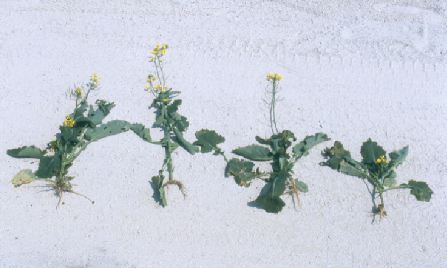
Features
Agronomy
Fertility and Nutrients
Fungicide increases malt barley kernel quality
Whether disease is present or not, product increases yield and kernel plumpness.
November 20, 2007 By Donna Fleury
For malt barley growers, the key grain attributes are kernel plumpness, yield
and protein. And maltsters want uniform, plump, mature kernels of highest quality,
free of disease, pests and other contaminants. Now, research from Westco Fertilizers
of Calgary, Alberta, shows that Tilt fungicide can be used to increase yield
and kernel plumpness, even if fungal disease is not present.
Net blotch and scald are the common foliar diseases attacking most varieties
of malting barley and can be controlled with Tilt to maximize crop quality and
yield. There is also zero tolerance for fusarium head blight infection in malt
barley.
To see if there was an interaction between disease control and fertilizer applications,
researchers at Westco Fertilizers conducted two experiments over a 10 year period
to look at the use of non-target applications (where disease was not present)
of Tilt, fertilizer nitrogen and the impact on the attributes of kernel plumpness,
yield and protein. The key to the research was that researchers were looking
at the impact of Tilt applications on these important attributes of barley seed
independent of whether disease pressure was present. Researchers were also trying
to determine whether there was an interaction between Tilt and nitrogen fertilization,
to compare different rates of nitrogen fertilizer in the two experiments.
A total of six different malt barley cultivars were seeded at 24 different
locations across western Canada, resulting in more than 225 trials in the 10
years of the research from 1989 to 1998, and a huge database of information.
The barley was seeded using an air-seeder with nine inch spacing and equipped
with three-quarter inch knives. Phosphate and potassium were side-banded one
inch to the side and one inch below the seed. Each plot was six by 20 feet,
and all treatments were replicated six times. In Experiment 1, four rates of
nitrogen were used while in Experiment 2, five rates of nitrogen were used.
The Tilt fungicide applications were made at the flag leaf stage.
| Figure 1. Improvement in plumpness of malting barley kernels as a result of Tilt application is associated with yield increases at various barley base yields. |

|
Rigas Karamanos, manager of agronomy at Westco, recently conducted an analysis
of all the data collected. He notes the results were 'really fascinating' with
the application of Tilt resulting in a significant yield increase in 90 percent
of the trials.
"The next step was to start putting economics to the results, and we tried
to estimate the probability of getting an economic response of $2 return for
every $1 spent on Tilt," explains Karamanos. "The economic benefits
of Tilt application are dependent on both the price of Tilt and malting barley."
For comparison purposes, two costs were assigned to Tilt, $6 per acre and $12
per acre. If the price of Tilt was $12 per acre and the price of barley is $2
per bushel, then the probability of getting an economic response is 30 percent.
If the price of malt barley was $3 per bushel, the probability was 50 percent
and at $4 per bushel, the probability jumped to 60 percent.
Using costs of $6 per acre for Tilt, then, the probability of getting $2 back
for every $1 spent was 60 percent at $2 per bushel, 75 percent at $3 and 80
percent at $4 per bushel. "These returns are based on no assessment of
disease, so in a disease situation there is definitely a much higher probability
of getting an economic return," adds Karamanos. There was no impact of
Tilt on grain protein in any of the trials.
| Figure 2. Application of Tilt improved yield equally at all nitrogen rates. |
 |
The application of Tilt resulted in an improvement in kernel plumpness at all
nitrogen rates. Researchers found that the lower the base yield, the greater
the response to a Tilt application. For example, if the base yield was 60 to
70 bushels per acre, then the higher the yield response and the greater the
improvement in kernel plumpness. At a higher base yield, for example 120 bushels
per acre, the lower the response to Tilt, both in terms of yield and plumpness.
The final results showed that both yield and kernel plumpness improved with
the use of Tilt and at all rates of nitrogen fertilization. However, there was
no impact on grain protein.
"These results indicate that malt barley growers can benefit from an application
of Tilt on their crops in terms of improving the important attributes of kernel
plumpness and yield," says Karamanos. "The decision for application
will depend on the economics of both the price of Tilt and the price of malting
barley. If there is disease pressure, then there may be added benefits to using
Tilt." -30-